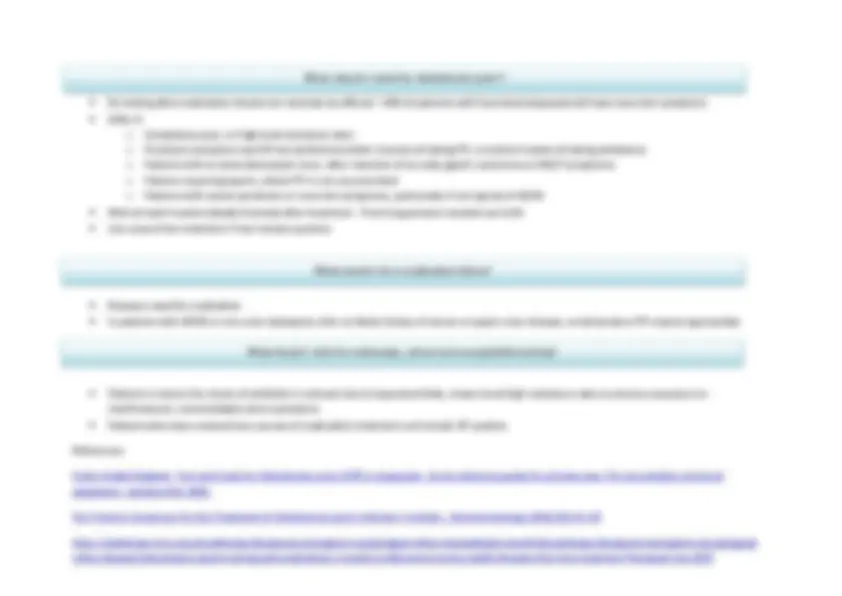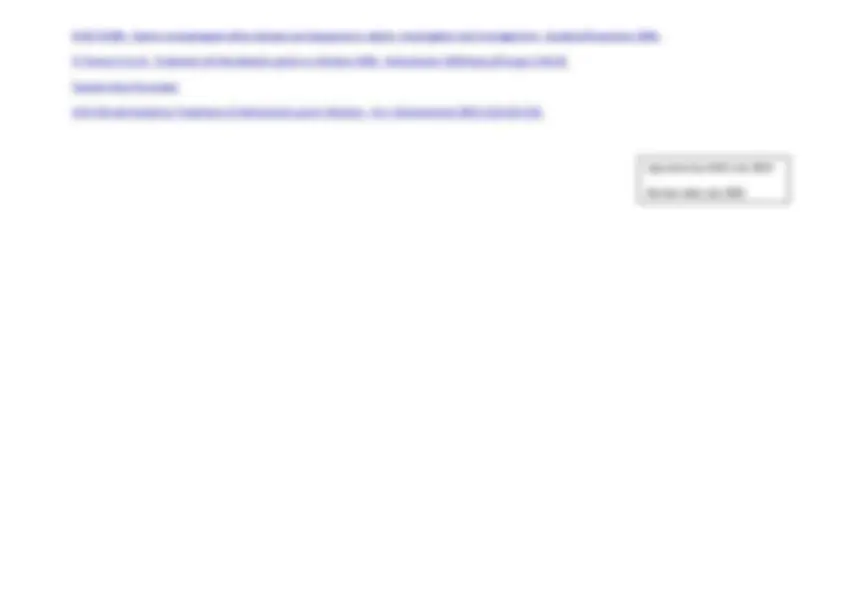




Study with the several resources on Docsity

Earn points by helping other students or get them with a premium plan


Prepare for your exams
Study with the several resources on Docsity

Earn points to download
Earn points by helping other students or get them with a premium plan
Community
Ask the community for help and clear up your study doubts
Discover the best universities in your country according to Docsity users
Free resources
Download our free guides on studying techniques, anxiety management strategies, and thesis advice from Docsity tutors
Guidelines for testing and treating helicobacter pylori (hp) infections in adults. It covers indications for testing, when to start treatment, and recommended eradication regimens. The document also discusses the importance of patient understanding and adherence, as well as potential risks and complications.
What you will learn
Typology: Lecture notes
1 / 4

This page cannot be seen from the preview
Don't miss anything!



When should I treat Helicobacter pylori?
H pylori Positive
H pylori Negative
ASYMPTOMATIC post-HP treatment
Treat H pylori
If H pylori negative treat as functional dyspepsia. Step down to lowest dose of PPI or H 2 RA needed to control symptoms. Review annually, including PPI need.
Reassure, as negative predictive value (NPV) of all tests is >95%
Only retest for HP if DU, GU, family history of cancer, MALToma or if test was performed within two weeks of PPI or four weeks of antibiotics
When should I test for Helicobacter pylori (HP)?
When is a test for Helicobacter pylori not required?
Approved by AMG July 2019
NO PENICILLIN ALLERGY PENICILLIN ALLERGY
FIRST LINE: 7 days PPI bd* PLUS amoxicillin 1g bd PLUS either metronidazole 400mg bd OR clarithromycin 500mg bd**
FIRST LINE: 7 days PPI bd* PLUS metronidazole 400mg bd PLUS clarithromycin 500mg bd**
ONGOING SYMPTOMS after first line – SECOND LINE: 7 days PPI twice daily* PLUS amoxicillin 1g bd PLUS second antibiotic not used in first line, either clarithromycin 500mg bd** or metronidazole 400mg bd
FIRST LINE WITH PREVIOUS MACROLIDE EXPOSURE (in last 12 months) OR SECOND LINE WITH PREVIOUS QUINOLONE EXPOSURE (in last 12 months) : 7 days PPI twice daily* PLUS bismuth subsalicylate 525mg qds OR Tripotassium dicitratobismuthate 240mg qds PLUS tetracycline hydrochloride 500mg qds PLUS metronidazole 400mg bd ONGOING SYMPTOMS AFTER FIRST LINE AND PREVIOUS EXPOSURE TO METRONIDAZOLE AND CLARITHROMYCIN – SECOND LINE: 7 days PPI bd* PLUS amoxicillin 1g bd PLUS tetracycline 500mg qds OR levofloxacin** 250mg bd
LEVOFLOXACIN: 7 days PPI bd* PLUS metronidazole 400mg bd PLUS levofloxacin**250mg bd
THIRD LINE: Only offer longer duration or third line therapy on advice from specialist
How should I treat Helicobacter pylori?
Approved by AMG July 2019
NICE CG184. Gastro-oesophageal reflux disease and dyspepsia in adults: investigation and management. Updated November 2014.
O’Connor A et al. Treatment of Helicobacter pylori in infection 2010. Helicobacter 2010 Sept;15 Suppl 1:46-52.
Tayside Area Formulary
ACG Clinical Guideline: Treatment of Helicobacter pylori Infection. Am J Gastroenterol 2017;112:212-238.
Approved by AMG July 2019